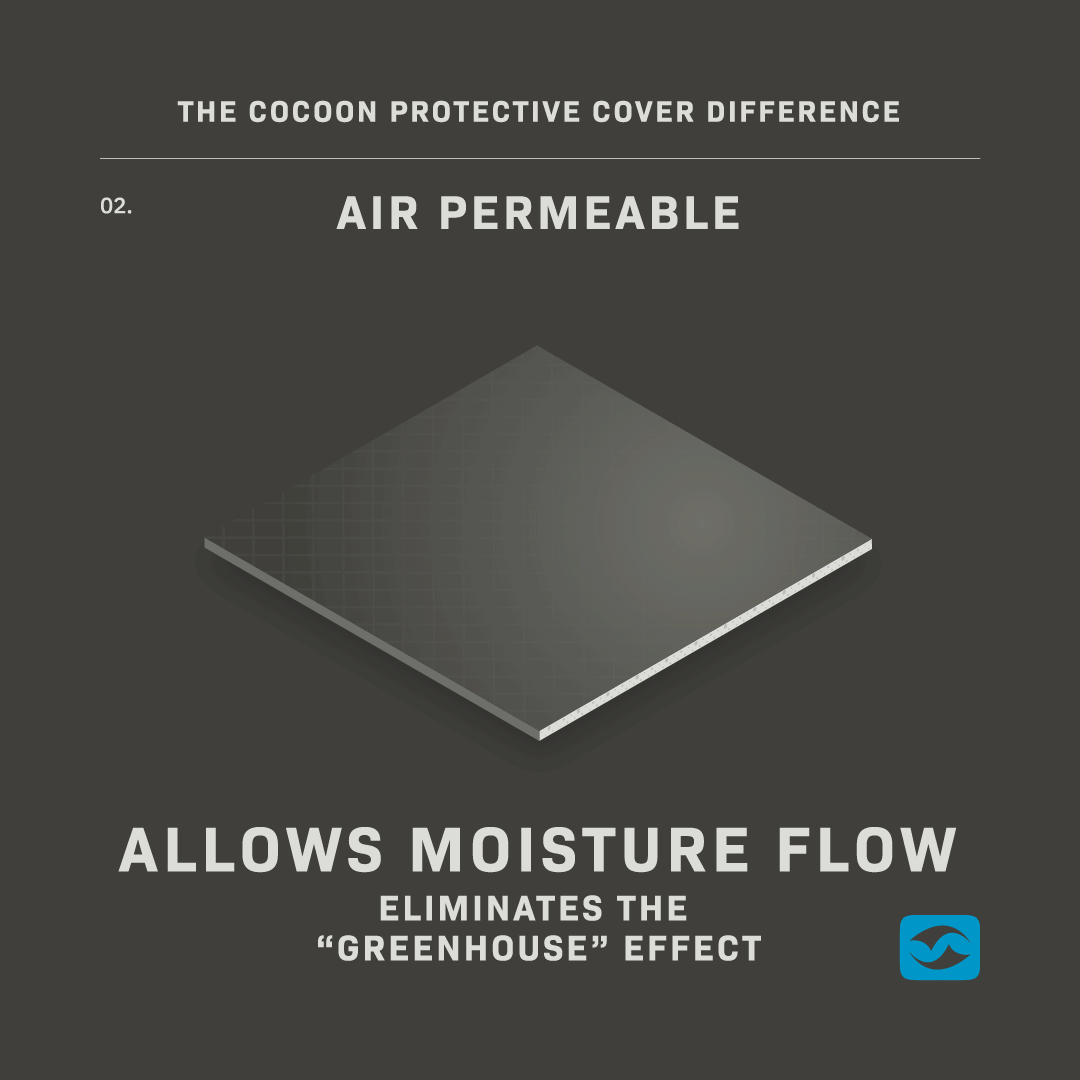Are air-permeability and breathability the same thing? (Spoiler alert: No)
Air-permeability and breathability sound like pretty much the same thing don’t they? Sometimes even people in the textiles field will mistake them for the same thing. However, there’s not only a distinct difference, but a crucial difference, when it comes to protective covers.
One of the essential elements of a protective cover is how easily and quickly it can release heat and moisture. To repeat - how easily and quickly a cover can release heat and moisture is essential.
Why? Because otherwise you get what’s called the “greenhouse effect” which can increase the risk of mold, mildew, and corrosion.
The problem with breathable covers is they require high relative humidity under the cover in order to push out moisture. Ironically that means you have to create the very conditions you’re trying to prevent!
By contrast, an air-permeable cover directly vents by allowing water vapor to escape as vapor (a breathable cover requires a “change of state” whereby the vapor turns into liquid).
In short, air-permeability allows a cover to release heat and moisture more quickly, eliminating the “greenhouse effect”, reducing heat buildup, and reducing “time of wetness” (TOW) which is a major factor in corrosion.
When you’re evaluating a protective cover, it’s important to know that breathability and air-permeability are not only different things, they make all the difference when it comes to performance. And if someone tries to tell you they’re essentially the same thing, you’ll know they aren’t!
Contact Us and we’ll be happy to walk you through the science behind the superiority of air-permeable covers.


